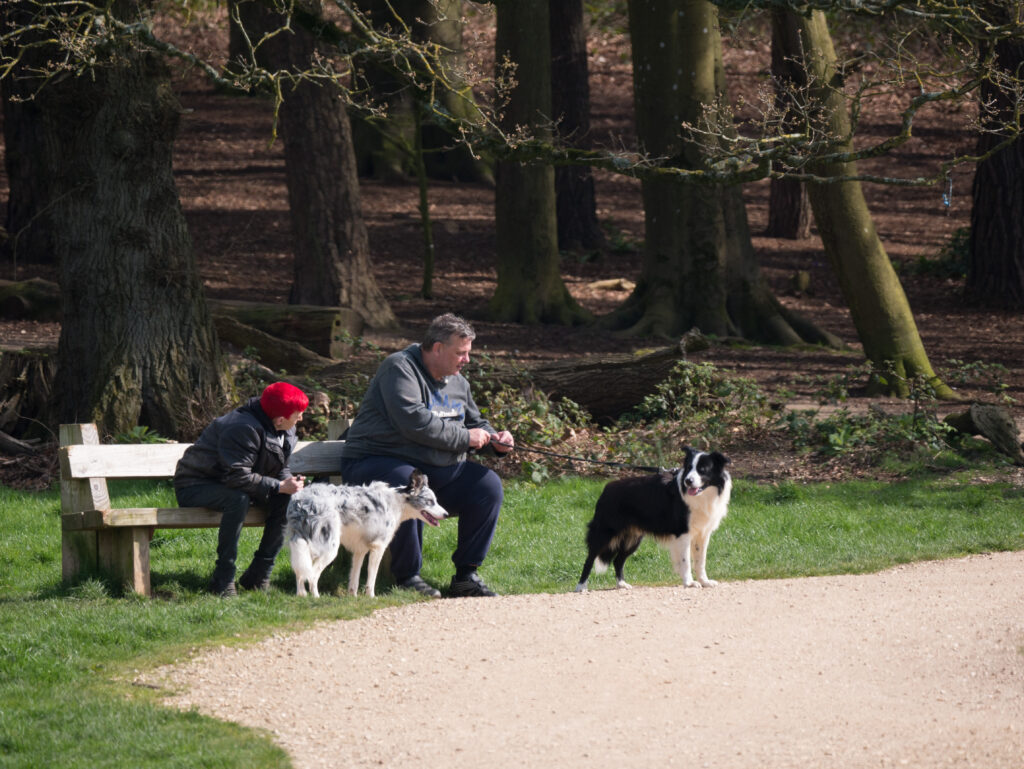Durwyn Liley, Dorset LNP Board Member, Footprint Ecology
Dogs are often beloved companions, treated as part of the family and they enhance many people’s lives through the company they provide and the health benefits they bring. Dogs can also cause problems for nature and wildlife, and there is a difficult balancing act at many countryside sites. I explore these issues in the blog post, drawing on some particular local examples.
There is now a large body of literature that describes the ecological impacts of dogs, much of which is eloquently reviewed by Stephen Harris in the journal British Wildlife[1]. Key issues include:
- Disturbance to wildlife, particularly birds, caused by the presence of dogs and dogs chasing wildlife;
- Direct predation including the chicks of ground-nesting birds;
- Attacks to livestock;
- Contamination and nutrient enrichment from dog fouling (both urine and faeces);
- Contamination of water bodies as a result of ectoparisiticidal compounds such as flea treatments.

Many dog walkers may be unaware of these impacts, fail to appreciate there significance or believe that they aren’t relevant to their pet. The evidence is however very clear, for example studies have shown the disturbance effects of dogs to birds are disproportionate compared to the presence of people without dogs[2] and experimental studies show that even dogs on leads can disturb birds sufficiently to induce displacement and cause a depauperate local bird fauna[3]. One study of the nutrient enrichment resulting from dog fouling suggests the impacts are at least equivalent to atmospheric pollution (e.g. from car exhausts)[4].
There may also be other impacts from dogs that are less well studied or understood. For example, dog faeces may well provide a key food source for foxes in some areas, potentially sustaining an elevated population of a key predator of many other species. There is much yet we still have to learn.
The number of dogs at many countryside sites serves to exacerbate the issues. There are thought to be around 13.5 million pet dogs in the UK and over a third of households own a dog[5], it is perhaps therefore not surprising that dog walking is the most commonly recorded activity at many countryside sites. For example, in a visitor survey across the Dorset Heaths in 2019, 74% of interviewees gave dog walking as their main activity. The overall number of dogs recorded in that survey was equivalent to 1 dog to every 1.5 people visiting the surveyed heaths[6].
It is interesting to reflect that dog walkers are the main visitors to many nature sites. This is perhaps due to there being few places outside nature reserves and protected sites where people can walk freely. In Dorset, much of the coast, heaths, broad-leaved woodlands and grasslands are SSSI (around 8% of the county) and much is internationally important for the species and habitats present. Many of these sites have a legal right of public access, for example criss-crossed by the rights of way network or open access land under the Countryside and Rights of Way Act (2000).
The solutions must lie in creating more space for recreation and sites that can welcome dog walkers with their pets. Alongside this, it is important to raise awareness among dog walkers and visitors about where to go and how to behave (and where is suitable to visit with a dog) and to ensure that the right protective measures are in place at the sensitive sites. In Dorset, Suitable Alternative Natural Greenspace (SANGs) are long established as a mechanism to address impacts from new housing. SANGs provide additional recreational space away from our most important nature sites. Alongside SANGs, Dorset Dogs[7] will be familiar to many dog walkers, the project has been working for many years to champion positive management for people with dogs and promoting responsible dog ownership.
Issues around dogs and visitors to the countryside have long been controversial. With such high levels of dog ownership (and levels that have increased with the Covid Pandemic) and a growing population, the issues are not going away. With so many pressures on the UK’s biodiversity, this is potentially one that can be easily solved. In Dorset, we are lucky to have long-running projects such as Dorset Dogs that are providing positive solutions.

[1] Harris, S. (2023) ‘Beware the dog: the ecological and environmental impacts of pet dogs’, British Wildlife, 34(7), pp. 487–496.
[2] Gómez-Serrano, M.Á. (2021) ‘Four-legged foes: dogs disturb nesting plovers more than people do on tourist beaches’, Ibis, 163(2), pp. 338–352.
[3] Banks, P.B. and Bryant, J.V. (2007) ‘Four-legged friend or foe? Dog walking displaces native birds from natural areas’, Biology Letters, 3(6), pp. 611–613.
[4] De Frenne, P. et al. (2022) ‘Nutrient fertilization by dogs in peri-urban ecosystems’, Ecological Solutions and Evidence, 3(1), p. e12128.
[5] Paw-some new pet population data released by UK Pet Food | UK Pet Food
[6] Panter, C. and Caals, Z. (2020) Dorset Heaths 2019 Visitor Survey. Report by Footprint Ecology for the Urban Heaths Partnership.
